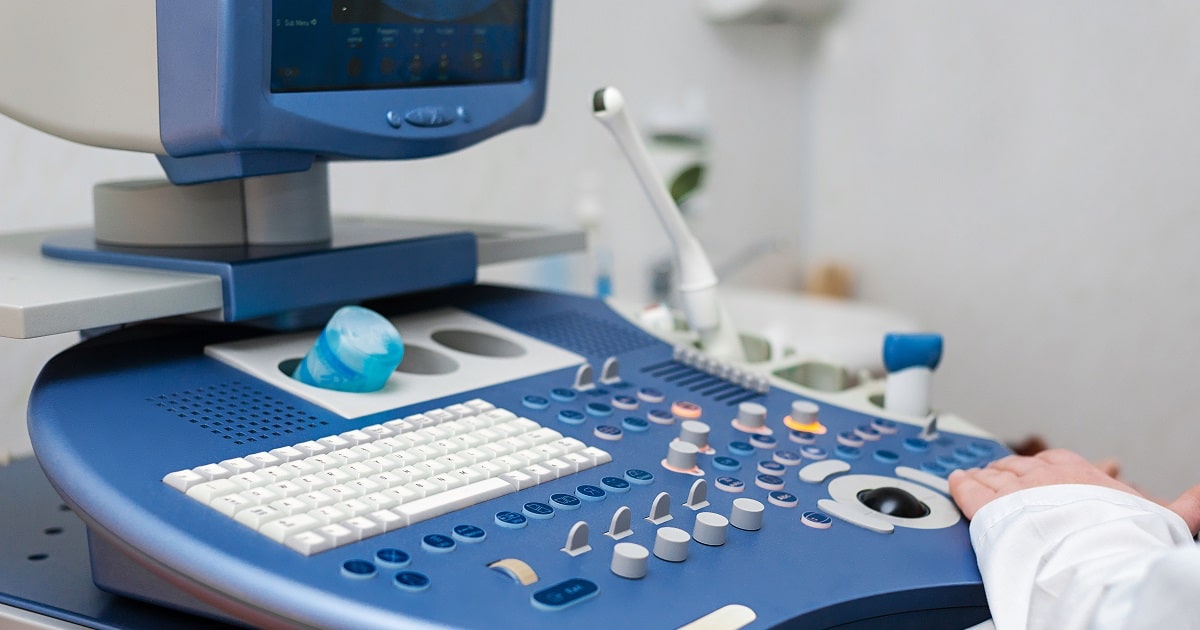
Health Technology, Digital Healthcare
Article | September 8, 2023
The criteria of patient satisfaction have changed dramatically. The priority of your healthcare business is to provide patients the right treatment. But nowadays, you cannot excel in your service and win the hearts of the patients just by providing the right treatment. You will also have to focus on delivering a great patient experience. Thus, a comprehensive healthcare marketing strategy should be designed accordingly.
In this digital age, along with their healthcare requirements, people are already overwhelmed with all the necessary information they need regarding their work and life-related issues. This has turned them into customers, rather than just being patients. And has led them to want and expect more. According to a study done by McKinsey, people expect from healthcare companies the same way they expect from other non-healthcare companies. Your patients now expect:
• Your deliverance on their expectations
• Great customer service
• Great value
• To make their life easier with the service they get from you
They look for whether your healthcare services provide these benefits through online resources. A Kantar Health Report says that around 60% of millennials depend upon online information as the best resource for healthcare information. They also consider word-of-mouth referrals trustful. This makes it vital for you to put in place the right digital healthcare marketing strategies. It is necessary to avoid your prospects going to your competitors whenever they search for effective medical services online.
The need for a robust Healthcare Marketing Strategy
Creating an effective healthcare marketing strategy is part of the inbound marketing process. The strategy can include and utilize all the resources to bring in opportunities. The resources also can confront the threats that come your way to hinder your healthcare business. The resources can be in any form of original content such as articles, blog posts, podcasts, interviews on medical topics, informational videos, e-books, case studies, press releases, white papers, etc. These resources deal with threats and opportunities that are concerned with persuading prospects to come to you.
Healthcare marketing strategy is a vision statement. It lays down the healthcare marketing plan in detail for some time. It should include objectives and plans for exceeding the current performance of your particular healthcare business. It should talk about competition analysis, target marketing, budgets, marketing tactics, and SWOT analysis, which are essential elements of an effective healthcare marketing strategy. Having the right healthcare marketing strategy in place will help you increase patient inflow and lower your marketing budget, which increases your return on investment (ROI).
Benefits of Having an Effective Healthcare Marketing Strategy
The right healthcare marketing strategy focuses on two main things; bringing in more patients to your hospital or clinic and maximizing your ROI. ROI can be maximized by minimizing expenses on both inbound and outbound marketing strategies. It is called ROI based marketing plan or strategy.
There are many benefits to having an effective healthcare marketing strategy in place for your medical practices. They include anticipating and assessing threats and opportunities, prepare to make a road map to counter the threats in time effectively, and find out creative ways to enhance your outcome. Below are some of the other benefits of having a healthcare marketing strategy:
Goals and Objectives
A sound healthcare marketing strategy, as discussed earlier, helps you to understand what you are going to achieve in a scheduled time frame. This keeps you focused on your goals without getting diverted. Moreover, it provides you a clear picture of your business's growth and makes you aware of how far you can go with your business in the target market.
Operating Budgets
Healthcare marketing strategy helps you create a detailed operation budget in advance for your business. By knowing your expected future costs, expenses, and forecasted income over the year, you can make better plans for all the expected and unexpected challenges of your business.
Service Line Decisions
When you compare your result with your expected results, you will understand where it worked well and the areas you need to improve. By knowing the areas in which you failed, you can improve them and yield better results on the next run by improving your line of services.
Risk Management
In business, risk management includes forecasting and evaluating the financial risks and identifying solutions to minimize or eliminate their impact. A clear healthcare marketing strategy in place allows you to manage these aspects of your healthcare business efficiently.
Capital Planning
A marketing strategy provides you a clear idea of how to process your budgeting resources for your organization's future. It is possible with both short-term and long-term plans.
Developing an effective healthcare marketing strategy
Creating goals and defining objectives or benefits that you intend to achieve is the first step to the creation of a healthcare brand strategy. Once all these things are set, you may assess all the required and available resources. Then devise a final strategy on when and how to fulfill these goals.
Healthcare digital marketing is unique as it is the most cost-effective way to reach out to your most relevant prospect at the right time. It ensures thatyou reach your patients in the time of their need. Here is a step-by-step healthcare marketing strategy for you. It is designed keeping in mind all the aspects of your healthcare business, including your competitors and prospective patients.
Establish Your Target Customers
The first step starts with identifying the most relevant target market for you. A comprehensive online and offline research would help you with it. The research can be based on demographic, geographic, behavioral, and psychographic information.
Then concentrate on all the marketing resources you have, in order to attract relevant customers. Clarity about your target audience ensures you create the right content for the right people. It also adds to the efficiency and effectiveness of your digital healthcare strategy.
Study Your Competition
Your competitors also target the same audience. So, identify competitive influences and issues to have a proactive strategy and plan. It helps you stay ahead of your competition with your healthcare marketing strategy. Use internet, TV and Radio commercials, referrals, data analysis, billboards, or other media to research your competition.
Internal and External Evaluation
To evaluate your external and internal environment, conduct a SWOT analysis of your healthcare business. Thorough knowledge of your strengths, weaknesses, opportunities, and threats will make you determine how to use your resources for better results effectively.
Decide Your Long-term and Short-term Goals
Most businesses conceive their marketing plans and strategies for a year. However, the best healthcare marketing strategy is the one, which is aligned with both the long-term and short-term goals of your brand. Evaluating, prioritizing, and organizing various combinations of specific marketing tactics and strategies will suit you the best in pursuing your business goals.
Plan Your Marketing Budget
Protecting and generating sources of revenue is generally a significant concern in marketing. Creating a task budget and clear objectives to work towards realizing the exact goals and outcomes you expect from your business is very important. For this, you may have to specify your measurable and quantifiable goals. Define your marketing tactics and strategies, including advertising, brand development and enhancement, networking and public relations, etc.
You also have to evaluate profitability, launching plan, and marketing plan. Moreover, monitor and track closely to adjust tactics and strategies necessary for achieving, maintaining, or exceeding your expected profit level.
The best part of having an effective healthcare marketing strategy in place is that it makes you focus your energy and time on improving your healthcare practice. The digital marketing team will work according to the strategy for realizing both your long-term and short-term goals.
Doing all of it alone may be challenging. We, at Media 7, help healthcare companies, especially healthcare technology providers, with healthcare marketing strategies, which are proactive and profit-oriented. We help you attract prospects, convert them, and make them your customers. To know more about us, visit the Media 7 website.
Frequently Asked Questions
What are marketing strategies for health tech marketers?
Health tech marketers can effectively use many marketing strategies, including engaging customers in social media platforms, video marketing, creating content for niche communities, email marketing, paid media advertising, event marketing, and content marketing.
What are the tips for creating the strategy for health tech marketing?
Updating your organization’s mission, vision, and values, conducting a business and operational analysis, developing strategic options, selecting strategic growth objectives, developing the strategy execution plan can be included in your health tech marketing strategy.
What are the best social marketing strategies for health tech?
Start using chatbots, create a personalized experience for your customers, create an efficient content marketing strategy, create a community for your audience, and create profiles on the relevant channels that can be the best social media strategies for health tech companies.
{
"@context": "https://schema.org",
"@type": "FAQPage",
"mainEntity": [{
"@type": "Question",
"name": "What are marketing strategies for health tech marketers?",
"acceptedAnswer": {
"@type": "Answer",
"text": "Health tech marketers can effectively use many marketing strategies, including engaging customers in social media platforms, video marketing, creating content for niche communities, email marketing, paid media advertising, event marketing, and content marketing."
}
},{
"@type": "Question",
"name": "What are the tips for creating the strategy for health tech marketing?",
"acceptedAnswer": {
"@type": "Answer",
"text": "Updating your organization’s mission, vision, and values, conducting a business and operational analysis, developing strategic options, selecting strategic growth objectives, developing the strategy execution plan can be included in your health tech marketing strategy."
}
},{
"@type": "Question",
"name": "What are the best social marketing strategies for health tech?",
"acceptedAnswer": {
"@type": "Answer",
"text": "Start using chatbots, create a personalized experience for your customers, create an efficient content marketing strategy, create a community for your audience, and create profiles on the relevant channels that can be the best social media strategies for health tech companies."
}
}]
}
Read More

Healthtech Security
Article | August 31, 2023
Dialysis providers face many of the same financial and operational pressures that affect other provider organizations, including flat or reduced reimbursements, chronic staffing shortages, and increasingly complex insurance requirements. Dialysis centers, nephrologists, and renal pharmacies also grapple with the impact of a growing shift in dialysis care to the home setting.
End-to-End Automation Can Reduce Denials, Improve Cash Flow
The good news is that despite these challenges, dialysis providers can sustain strong cash flow, reduce costs, and mitigate denials by applying advanced technology to the revenue cycle.
Here are six ways technology can help strengthen the dialysis center revenue cycle in the today’s difficult operating environment:
Identify undisclosed insurance coverage
Because patients often present as self-pay even though coverage exists, determining their true insurance status can be challenging. Yet failure to identify existing insurance can result in significant write-offs.
That’s why renal providers need technology solutions that can uncover patient coverage information before care is provided. Change Healthcare’s Coverage InsightTMsolution provides an expansive network and search-and-matching capabilities necessary to identify and confirm patient coverages at the outset of care.
The solution uses machine learning algorithms—coupled with access to vast stores of available third-party-data—to develop robust patient profiles, which can then be linked to potential funding sources. Notably, it identifies a variety of indicators, including high probability of disability, income levels and financial status, insurance sources, and other actionable information to help you verify coverage and recover revenue.
We can help identify undisclosed coverage for end-stage renal disease (ESRD) patients through Medicare/Medicaid, Disability/SSI, third-party liability, commercial insurance, state and county programs, social programs, and charity.
Expedite seamless prior authorizations
Streamlining the prior authorization process is essential to help ensure optimal reimbursement for renal care rendered, particularly with commercial insurance and Medicare. But traditional prior authorization processes are frequently time-consuming and labor-intensive and can delay necessary care.
Our Clearance Authorization software addresses the chronic problem of prior authorizations with automated functionality that can determine if prior authorization is required and on file with the payer. The solution also will automatically check medical necessity requirements at the time of registration and electronically submit requests to integrated payers.
Change Healthcare’s Connected Authorization Services go a step further by deploying pre-authorization experts to handle routine authorizations quickly using intelligent technology while working complex cases by exception to improve authorization efficiency and accuracy.
Speed adjudication with electronic attachments
As claims management processes have grown more numerous and complex, providers have struggled to ensure that the correct information is provided to the payer at the appropriate time. The result can be delayed, denied, or rejected claims.
Assurance Attach AssistTMcontributes to faster reimbursement and reductions in denials, organizational expense, and administrative burden by automating the attachments process to meet payers’ increased demands for additional documentation. Attachments are automatically delivered and matched to the appropriate claim, and once the claim is released, claim and attachment status can be easily tracked.
Expedite claims workflow for recurring services
Creating claims for ongoing ESRD care requires repeatedly documenting the same details on each claim. Revenue Performance Advisor, an end-to-end medical billing platform, provides automation that allows dialysis staff to save time by quickly replicating unchanged data from prior visits while updating date-of-service and other information to expedite claims processing.
Revenue Performance Advisor also includes eligibility and benefits verification and automated claims scrubbing that flags incomplete or incorrect claims prior to submission, resulting in a first-pass clean claim rate of 98%.
Accelerate your Medicare claim cash flow
Medicare is one of the largest payers of dialysis services, so ensuring a problem-free and expedited Medicare claims submission process is essential to strong cash flow.
Our Assurance Medicare Direct EntryTMsolution provides a single system for the real-time submission and processing of Medicare claims. It can help expedite reimbursement, reduce AR days, and speed your Medicare primary claim cash flow by at least one full business day.
Assurance Medicare Direct Entry also checks your Medicare claims for eligibility errors using the CMS eligibility transaction system (HETS). Claims needing attention are flagged and posted in Assurance Reimbursement Management for editing. You can quickly correct errors within the system before transmitting the claim directly to Medicare for validation and payment processing.
Optimize patient liability
Making it easy for patients to receive, understand, and pay their portion of the medical bill is key to ensuring a healthy revenue cycle, mitigating the need for collection services, and improving patient goodwill.
With our Patient Billing and Statements solution, Change Healthcare serves as your strategic communications partner, delivering multi-channel, personalized print and digital statements to help expedite patient payment collection.
The solution is designed to provide fast, effective statement and invoice processing, printing, and mailing—cutting your costs and getting you paid sooner. Our advanced statement printing allows you to bypass conventional and time-consuming folding, stuffing, and stamping.
SmartPayTMconsolidates each step of the billing and payment process into one place, enabling you to collect more patient payments, get paid faster, reduce your collection costs, and lower patient write-offs. With multiple payment channels, including online, mobile, telephone and via mail, SmartPay helps expedite patient payments before, during, and after the encounter.
A single, trusted partner
Change Healthcare’s deep knowledge of the renal care landscape and our development of disruptive technologies to overcome traditional revenue cycle barriers can help dialysis centers achieve unprecedented revenue cycle excellence.
And unlike many point solutions that only address a specific revenue cycle issue, Change Healthcare’s technologies are part of a comprehensive approach delivered through a single, trusted vendor. That translates into improved process integration and continuity, as well as simpler overall accountability.
Read More

Health Technology, Digital Healthcare
Article | September 7, 2023
Artificial Intelligence is here to improve our lives, by not just making things more efficient, but also increasing our lifespan. Companies across industries are experiencing the advantages that come with AI innovation, especially the healthcare space. Throughout human history, we’ve been able to understand the parameters that determine health better, and we’ve developed accompanying technology. With vaccines in the late 1700s, anesthesia and medical imaging in the 1800s, to organ transplant and immunology in the 1900s, healthcare innovation has been on an upward slope.
Read More

Health Technology
Article | August 12, 2022
Introduction
Over the past couple of years, there has been a substantial rise in the burden of chronic conditions and treatment costs, along with the growing elderly population, which is transforming the healthcare sector at a rapid pace. As per a study, healthcare spending across the globe is anticipated to reach an unprecedented value to total US$ 18.3 trillion by 2030. In response to these trends, volume-based payment models are being replaced by outcome- or value-based models.
Predictive analytics helps health organizations to get in line with these new models and improve patient care and outcomes. From predicting critical conditions such as heart failure and septic shock to preventing readmissions, the recent advancements in big data analytics are boosting the adoption of new predictive analytics solutions that aid clinicians improve outcomes and cut costs.
Predictive analytics in healthcare is most helpful with clinical care, administrative tasks, and managing operations. More importantly, the technology is already making a difference in a wide range of healthcare settings, from small private doctor's offices and large academic hospitals to healthcare insurance companies.
How is Growing Healthcare Data Favoring the Penetration of Predictive Analytics?
The growing inclination toward digitalization in the healthcare industry has led to the creation of huge new data sets. These include radiology images, electronic medical record (EMR) systems, lab results, and health claims data. The amount of data is expected to reach new avenues with increasing genomics and cytogenesis research data in the near future.
New data is being generated and collected by the novel medical devices at the edge, such as monitors and patient wearables. In addition, outside the healthcare setting, patients are generating quasi-health data through the use of health monitoring applications, fitness trackers, and personal wearable devices.
By using data from these sources, health care providers can find new ways to use predictive modeling for health risks, predictive analytics for medical diagnosis, and prescriptive analytics for personalized medicine.
Predictive analytics has become a crucial component of any strategy for health analytics. Today, it's an essential tool for measuring, combining, and making sense of biometric, psychosocial, and behavioral data that wasn't available or was very hard to get a hold of until recently. Here are some of the applications of predictive analytics for healthcare
Identifying Patients at Risk
Clinical Predictions
Disease Progression and Comorbidities
Predicting Length of Stay
Speeding Treatment of Critical Conditions
Reducing Readmissions
The Future Story
With the growing prominence of innovative technologies across the healthcare industry, a number of health IT providers are focusing on developing their own analytics software and engines to assist healthcare spaces deliver optimal patient care.
For instance, in 2020, Eversana, a U.S.-based provider of innovative solutions to the life sciences industry, announced the introduction of its ACTICS predictive analytics solution, which enables clinical spaces to combine multiple data sources into a single comprehensive system.
Also, some U.S. companies are partnering with healthcare institutions to develop proprietary algorithms designed to enhance organizational performance, improve clinical care, and increase operational efficiency. Such developments are projected to increase the popularity of predictive analytics solutions in the healthcare sector in the coming years.
Read More